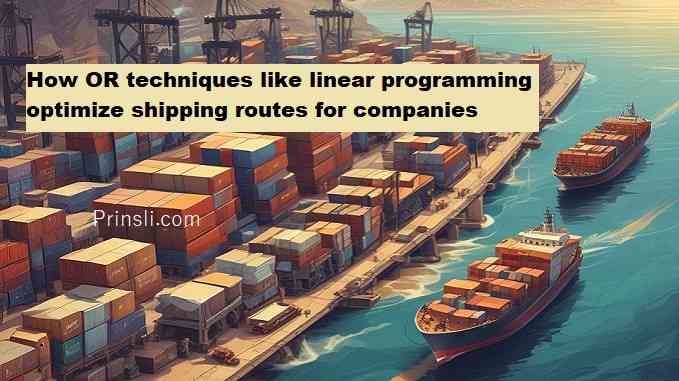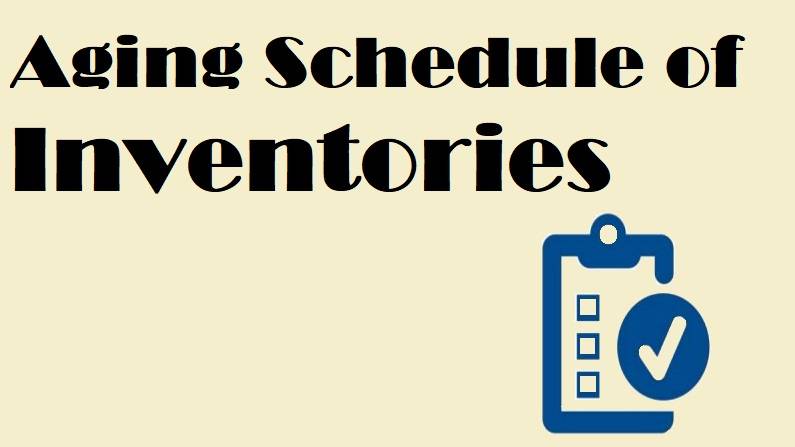
Discuss how OR techniques like linear programming optimize shipping routes for companies like FedEx?
How FedEx Uses OR Techniques like Linear Programming to Improve (optimize) Shipping Routes – Companies like FedEx handle millions of packages every day, so it is crucial for them to find the best way to deliver them as quickly and cheaply as possible.
These companies deal with complex logistical challenges, such as minimizing shipping costs, reducing delivery times, maximizing resource utilization, and ensuring customer satisfaction.
Operations Research (OR) techniques, especially Linear Programming (LP), play a critical role in optimizing shipping routes for logistics companies like FedEx. Linear Programming (LP), is a method that helps them make better decisions about their shipping routes.
Here is how companies like FedEx benefits from LP, that is, how OR techniques like LP optimizes their shipping routes:
1. Cost Minimization
FedEx operates a large fleet of vehicles across various routes to deliver packages globally. Each vehicle incurs fuel costs, vehicle maintenance costs, and labor expenses or driver wages.
By using LP, FedEx can figure out the most cost-effective routes for its trucks and planes. Linear programming helps to minimize these costs by determining the most efficient routes based on various constraints, such as vehicle capacity, fuel limits, and delivery deadlines. The goal is to deliver packages while spending the least amount of money.
Objective function: Minimize delivery costs.
The cost of shipping, including factors like fuel, labor, and tolls, is minimized.
Constraints: These may include the number of trucks available, delivery times, weight and volume limits, and traffic or weather conditions.
FedEx has to consider things like the number of vehicles available, delivery deadlines, and how much fuel they can carry.
For Example, FedEx can use LP to find the best combination of routes and transportation modes (air, land, sea) to minimize the overall cost while ensuring timely deliveries. LP helps FedEx choose the best mix of transportation methods (like air, land, or sea) to keep costs down and deliveries on time.
2. Time Efficiency and Scheduling (Saving Time)
Speed is also a big deal for FedEx, where customers expect their packages to arrive at a certain time. FedEx guarantees delivery times through services like “FedEx Express” or “FedEx Overnight,” and failure to meet these deadlines can lead to penalties or lost customer trust.
LP can also optimize shipping routes for speed, ensuring that packages are delivered on time. LP helps FedEx plan the fastest and least congested routes to ensure deliveries are on time. By using LP to optimize scheduling, the company ensures that all deadlines are met by balancing the fastest routes with the least congestion and most efficient stops.
Objective function: Minimize total delivery time.
Minimize total delivery time or the number of late deliveries.
Constraints: Consider factors like traffic, weather, and available trucks or planes.
Road traffic, weather patterns, airport schedules and fleet availability are taken into account to create a feasible and efficient schedule.
By finding the fastest routes for deliveries, LP ensures FedEx can keep its delivery promises to customers.
3. Capacity Utilization (Filling Vehicles Efficiently)
To save money, FedEx also wants to make sure that each truck or plane is fully loaded when it goes out for delivery. The company needs to make sure that they are not only filling their vehicles to capacity to maximize revenue but also distributing packages in a way that balances load distribution and prevents overloading or inefficiency.
Linear programming also helps FedEx optimize the loading of trucks and planes. LP helps the company figure out the best way to fill each vehicle, so they can transport as many packages as possible on every trip.
Objective function: Maximize the use of each vehicle’s space.
Maximize vehicle capacity utilization, ensuring each trip is as profitable as possible.
Constraints: Vehicles have weight and size limits, and packages need to be delivered at specific times.
Vehicle weight, volume capacity, and customer-specific delivery windows (e.g., “must arrive by 10 AM”).
This way, no vehicle is underused, and FedEx reduces “empty miles” (when vehicles travel without full loads), saving on costs and cutting emissions. This ensures that no vehicle is underutilized, reducing empty miles, which in turn lowers costs and emissions.
4. Network Design and Hub Optimization (Better Hub and Route Design)
FedEx operates a hub-and-spoke model, with key hubs distributed globally. That is, FedEx operates with a network of hubs (central locations where packages are sorted before going to their destination).
LP helps the company determine the optimal location for these hubs and routes between them. That is, LP helps the company figure out the best places to put these hubs and the best routes between them.
By doing this, they shorten the total distance that packages need to travel and make deliveries faster. By optimizing network design, FedEx can efficiently route packages between hubs, reducing total shipping distance and improving delivery speed.
Objective function: Minimize total shipping distance or transportation costs between hubs.
Constraints: Package volumes, hub capacity, and processing times at each hub.
FedEx needs to think about how many packages go through each hub and how fast they can be sorted and sent on their way.
5. Real-Time Adjustments with Dynamic LP (Adapting to Real-Time Problems)
Sometimes things don’t go as planned—like when there’s bad weather, a traffic jam, or a vehicle breakdown.
FedEx uses dynamic LP models to adapt to real-time disruptions such as traffic jams, bad weather, or vehicle breakdowns. LP can help FedEx make quick changes to its delivery routes in real-time to avoid delays and keep costs low.
These models help reroute shipments on the fly, ensuring minimal delays while keeping operational costs low.
Case Studies and Applications (Real-World Examples – How OR Techniques like LP optimize shipping routes)
1. FedEx Ground:
In the early 2000s, FedEx Ground implemented an LP-based model that reduced delivery miles by more than 7%. This saved the company millions of dollars every year.
2. UPS ORION:
A similar company, UPS, which is a direct competitor to FedEx, uses a system called ORION, which also uses LP techniques. Its ORION system is a sophisticated application of LP and other OR techniques.
This ORION system helped UPS save up to 10 million gallons of fuel every year by optimizing their routes. This demonstrates the power of LP in optimizing logistics.
Conclusion – How OR Techniques like LP optimize shipping routes
Linear programming and other OR techniques are essential tools for logistics companies like FedEx, helping to reduce costs, maximize efficiency, and improve customer service. Linear programming helps FedEx and other shipping companies solve complex problems by finding the best ways to save money, deliver packages faster, and use their resources more efficiently.
As shipping networks grow and get more complicated, tools like LP become even more important for keeping everything running smoothly. The complexity of global shipping networks necessitates sophisticated optimization methods, and LP enables companies to navigate this complexity effectively.
References and Sources:
1. Abdelkafi, Nabil, and Jaber, Tanios. “Logistics and Supply Chain Optimization Through Linear Programming.” Journal of Operations Research, 2019.
2. FedEx. “Corporate Brochure 2023.” FedEx Publications.
3. “Optimizing Logistics Networks with Linear Programming.” Logistics World, 2021.
4. Toth, Paolo, and Vigo, Daniele. Vehicle Routing: Problems, Methods, and Applications. SIAM, 2014.
5. “UPS ORION Optimization Saves Fuel and Costs.” Transport Topics, 2020.
Copyrighted Material © 2019 - 2024 Prinsli.com - All rights reserved
All content on this website is copyrighted. It is prohibited to copy, publish or distribute the content and images of this website through any website, book, newspaper, software, videos, YouTube Channel or any other medium without written permission. You are not authorized to alter, obscure or remove any proprietary information, copyright or logo from this Website in any way. If any of these rules are violated, it will be strongly protested and legal action will be taken.





Be the first to comment